This story begins at a retrospective of the Secessionist artist Egon Schiele. Schiele has always been a favorite artist of mine. His heavy-lined, distorted figures are an influence on my own semi graphical style. Yet it is the mythology around the man that partially attracted me to his work.
This is an artist whose pencil drawings of phallic objects and open legs had the artist arrested on charges of pornography. This was a man who tried to keep his relationship with two sisters going even after marrying one of them.
Yet not a word of this appeared in the exhibition. In fact, barely one of his offensive nudes was on show. Instead, I saw a trite display of one of the world’s great figurative drawers at his most mediocre.
Are we destined to erase the work of great artists because it does not fit our moral compass? In a world of cancel culture, how do our ethics edit and influence works of the past, present, and future? Read on as I discuss why it is acceptable to be offended by art.
Sally Mann
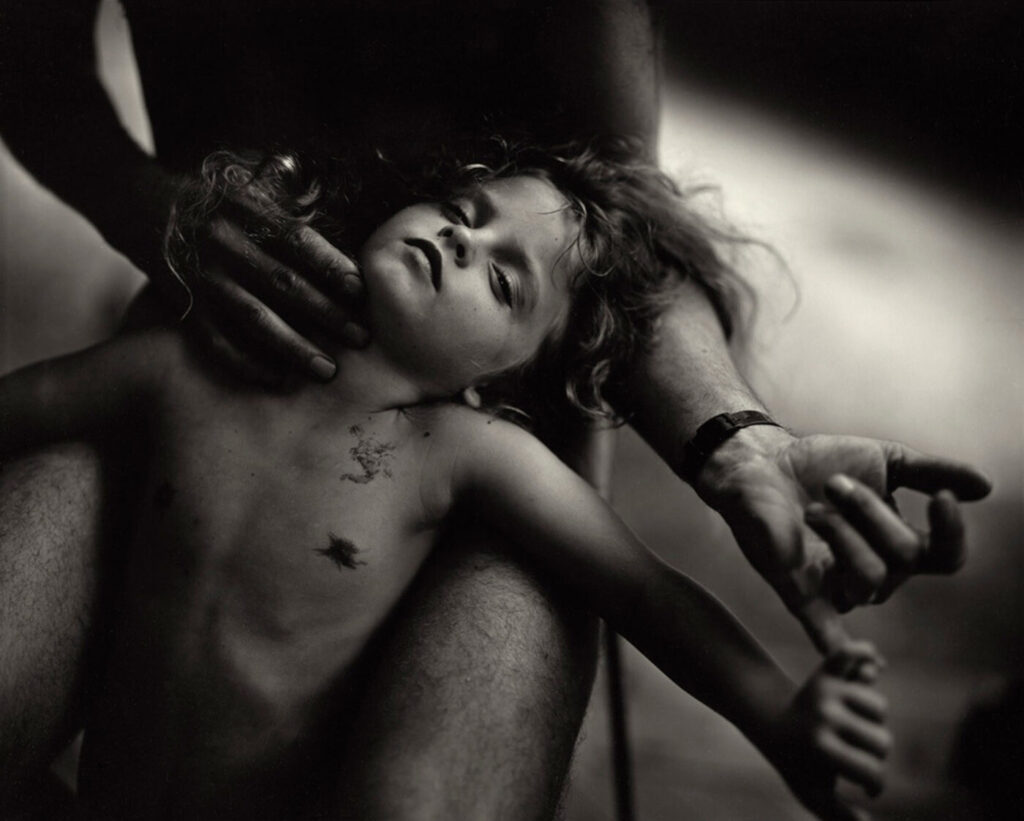
One of the most divisive pieces of modern art is that of photographer Sally Mann. Taking the humble photo album, Mann courted controversy in the nineties with family photographs. They were so intimate many believed they bordered on child abuse.
Titled “Immediate Family” the pictures were of her three children. It raised questions in the mainstream media about the concept of child exploitation. Much of this stemmed from Mann’s ability to photograph the darker side of childhood, such as her daughter’s insect bite swollen face, and soiled beds.
What many people overlooked was the pure truth in these pictures. The sweeping southern state backdrop and the home itself are as much a focus in the work. What is a family life without this and these darker moments?
While many chastised Mann for insulting decent ethics and morals, Mann was doing the opposite. She was showing the line a mother must run between protecting the child and letting them explore. In turn, many viewed this as neglect.
Being offended means you are worried. That is why these pictures work. By feeling offense, you are displaying the same confusion a mother would as they both work to protect their children and expose them to danger by letting them explore the wider world.
Dread Scott
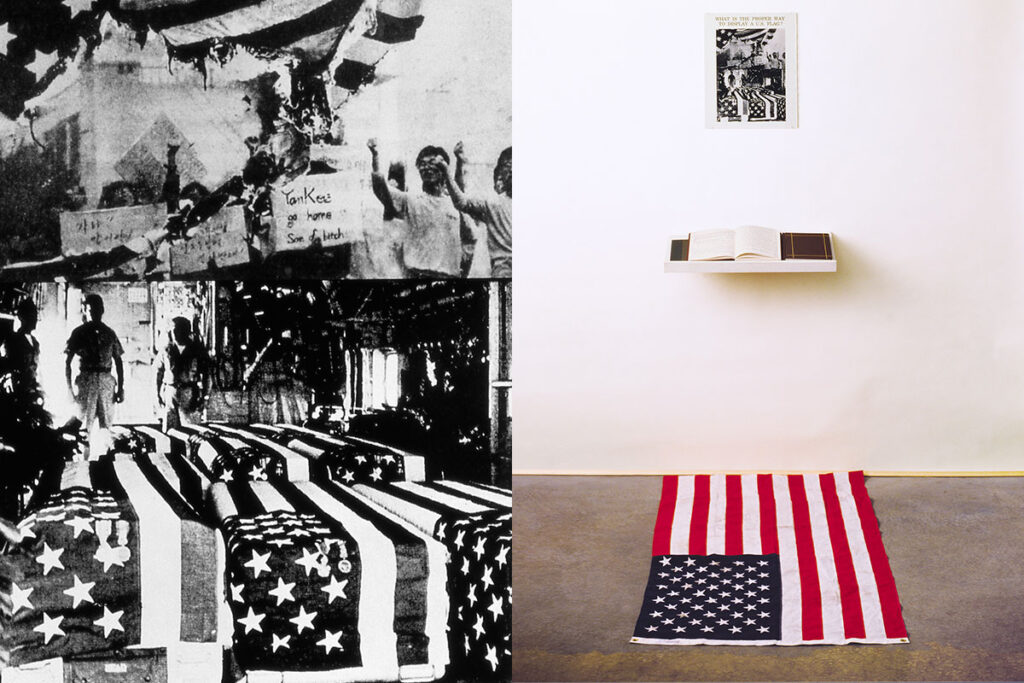
Another artwork that challenges the notion of ethics and art is the piece “What is the Proper Way to Display a US Flag?”. Create by Dread Scott, this picture featured three components. One was a montage of American flags and protests.
Beneath this was a shelf. On this was a book for people to write in. However, the most controversial item was a US flag on the floor beneath.
The flag on the floor meant people would have to make the decision to step on it if they wanted to write in the book. Veteran’s associations went mad. President Bush denounced it, as did Congress. Yet the real power behind the piece was not that it courted controversy about standing on the US flag, it was what had people make that choice stood for.
The American flag is an icon of democracy and free speech. Yet to exercise that right, you first had to denounce and defile that which gave you the privilege. It was a catch 22 of epic proportions.
This decision was one that many people could not compute. It is this that gave the piece its edge, a middle finger to the political system that in turn gave it the right to do so. Is towing that line not even more American than the stars and stripes itself?
It is the same dichotomy that a mother finds herself in. You respect the state for its ability to give free speech, yet in doing so free speech can go against the state itself.
Irvine Welsh
Irvine Welsh believes the power to offend and challenge our ethics is intrinsic to the artist. The lauded author believes classics such as his novel ‘Trainspotting’ (Removed from the Booker Prize list for claims about offensive content) must be allowed to explore the fringes of society. This is despite it not being to everyone’s liking.
His recent book ‘Offended’ explores this concept. His worry is that once someone creates art that offends, the mob then turns to anyone that liked anything to do with that artist. This brings with it a culture of mediocrity, with everyone playing it safe.
At the end of the book, Welsh reimagines one of his characters from the book Filth in line with modern values. Without his sexist, racist tones he stops being a person. Welsh explained that the character vanished without depth.
The Rise of Cancel Culture
This debate goes hand in hand with the concept of cancel culture. This is the process in which comments or art made by a person go against social norms and conventions. Inevitably, this results in repercussions, both socially and financially. Not only may people get backlash on social media, but they may also find themselves dropped by publishers, record labels, and sponsorship deals.
Opposition to this is so strong, that a petition has been signed by over 150 writers, artists, and academics against cancel culture. Its manifesto is that cancel culture is making us pay the price for risk aversion among artists if they deviate from the consensus or even lack zeal in agreement.
Degenerate Art
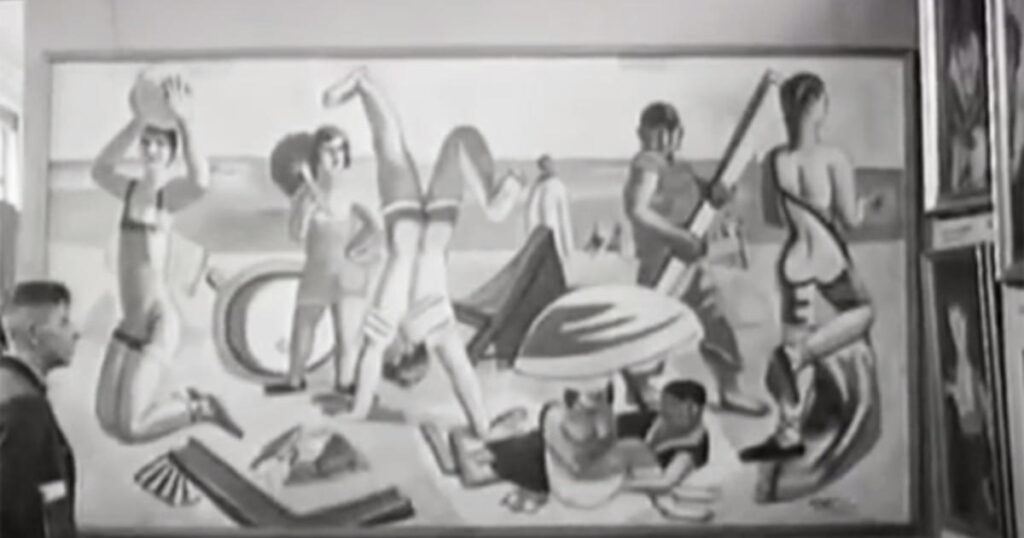
On a visit to my adopted city of Budapest, an aunt of mine saw a painting in a junk shop she liked. I bought it for her as a gift. After when we did our research, we realized my aunt had stumbled on something quite rare.
This artist was Hungarian but had moved to Berlin, whereby their art was classified as ‘Degenerate Art’ by the Nazis. Rather than have their work seized and destroyed by the party, they did this themselves. My aunt now had one of the artist’s few remaining works.
What interested me about this was the classification of art as degenerate art. To the Nazis, this was anything modern, that did not uphold the party values of racial purity and civil obedience. Essentially, the ruling party was turning all art into propaganda. If it did not offend, it did not make people think and it then became a tool of the state.
Thinking of this, the word offense should then possibly be replaced with challenge. I liken it to the early days of punk when the Sex Pistols sang God Save the Queen. It was offensive to many, but it also had genuine meaning and sentiment for political change behind it.
This gave way to a glut of pretenders, who assumed punk was about being offensive for the sake of the movement. Like punk, art needs to be offensive, but it needs to offend with depth, meaning, and challenge perceptions. If not, then it becomes propaganda.
Cancel culture could be the biggest threat to art itself. Be it music, painting, sculpture, or literature, art that does not challenge our ethical stance does not make us think. It should make us look at the world around us, make us question what is right and wrong then improve upon it. Next time you find yourself offended by art, then think how lucky you are. Without it, you probably would have never had the privilege.


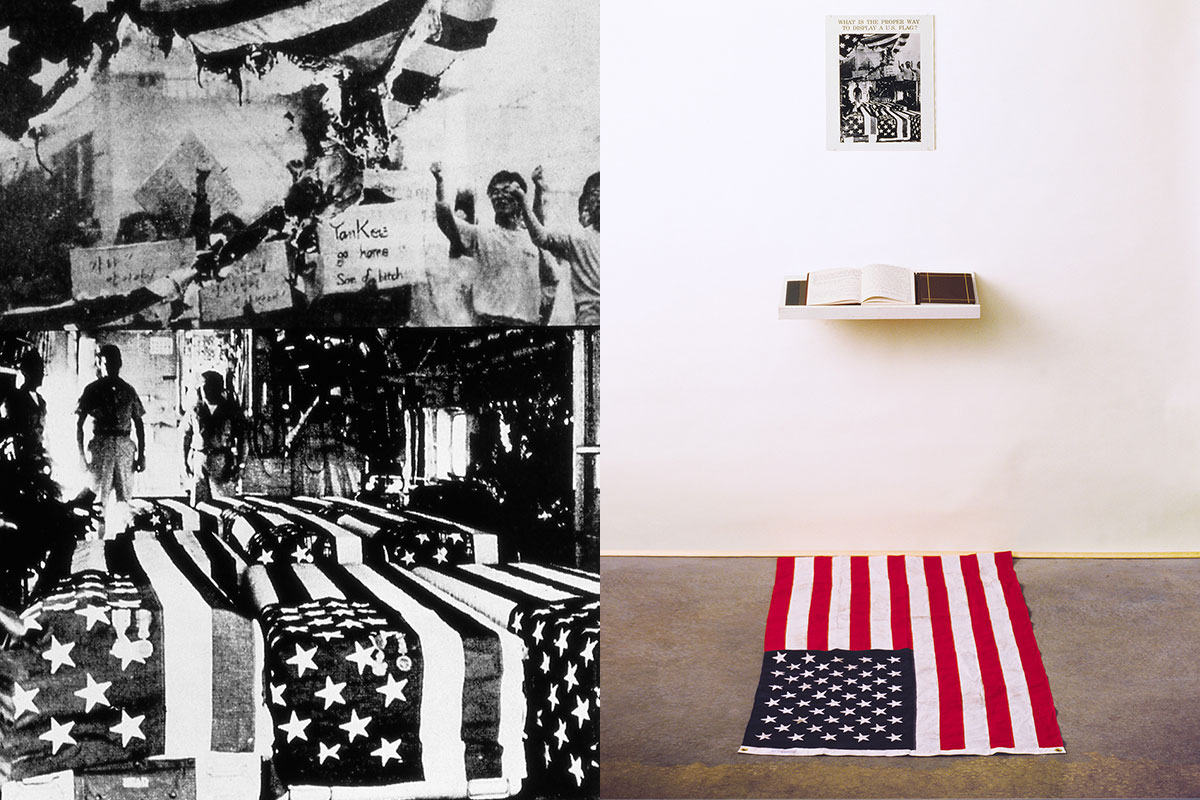

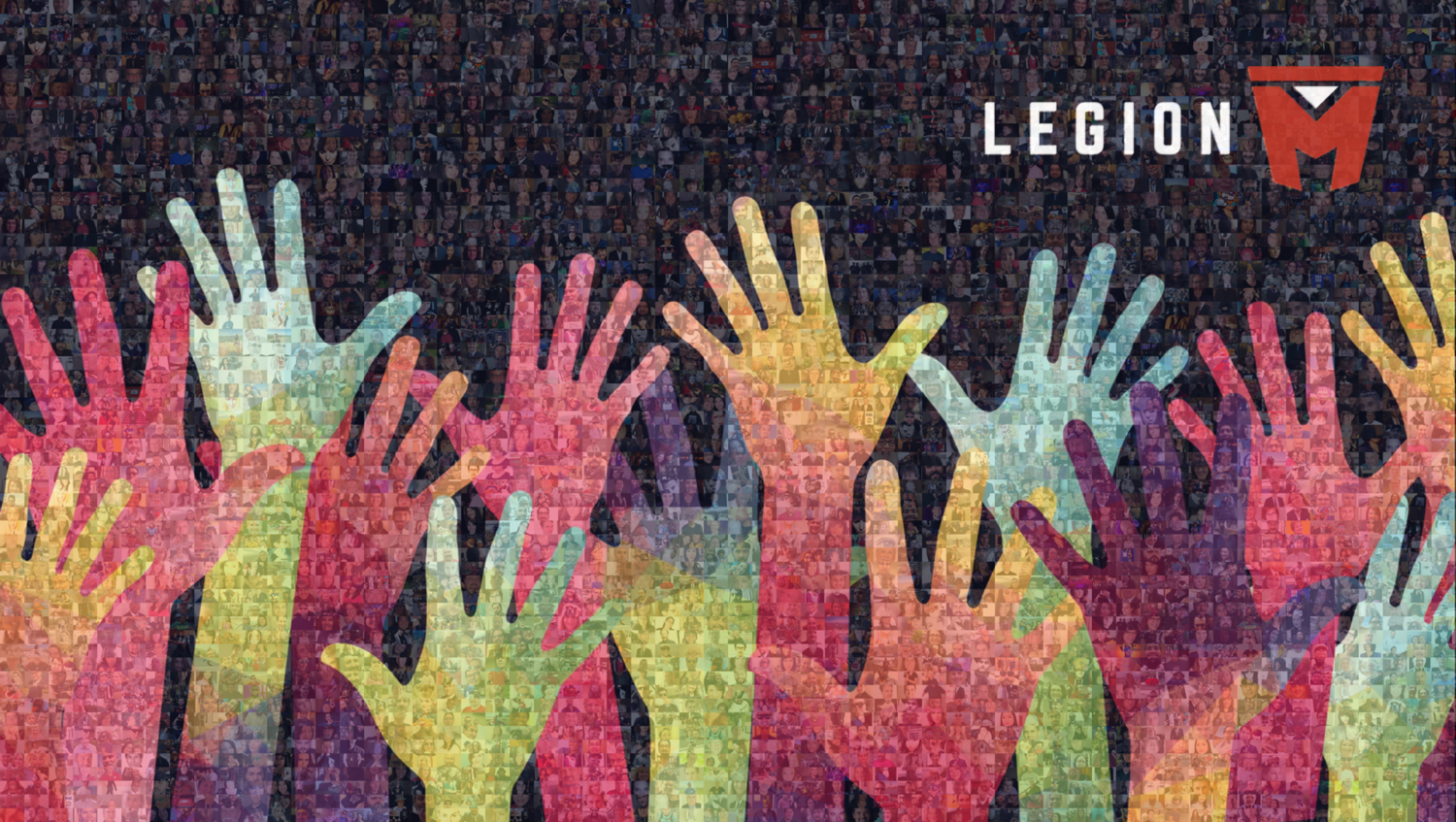

Great content! Keep up the good work!
Happy everyday!
人生不如意十之八九,开心最重要!
不知道说啥,开心快乐每一天吧!